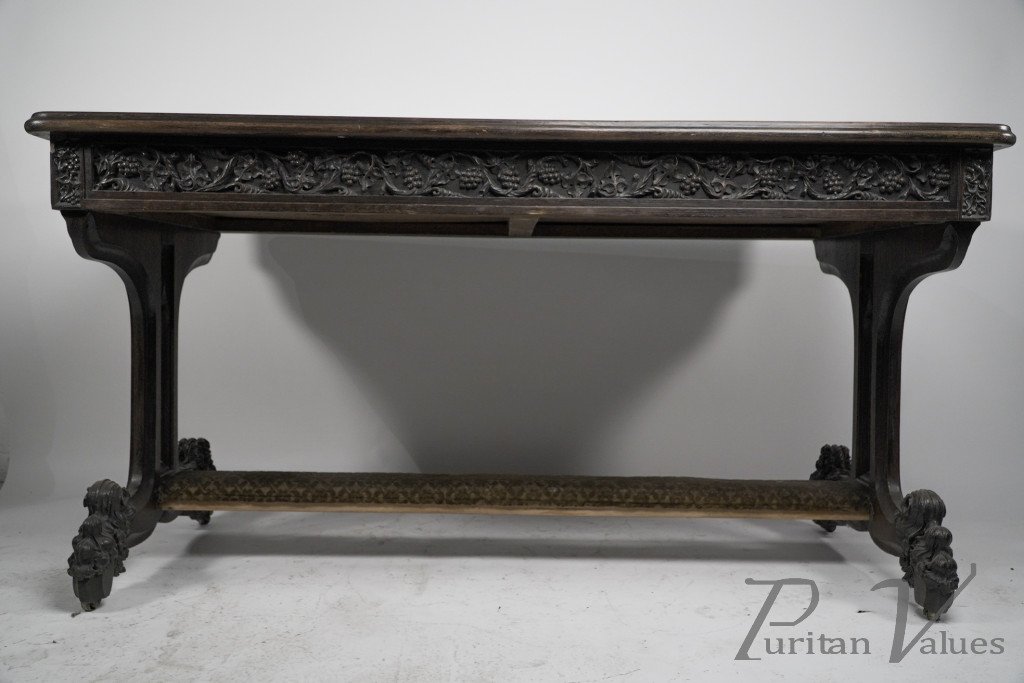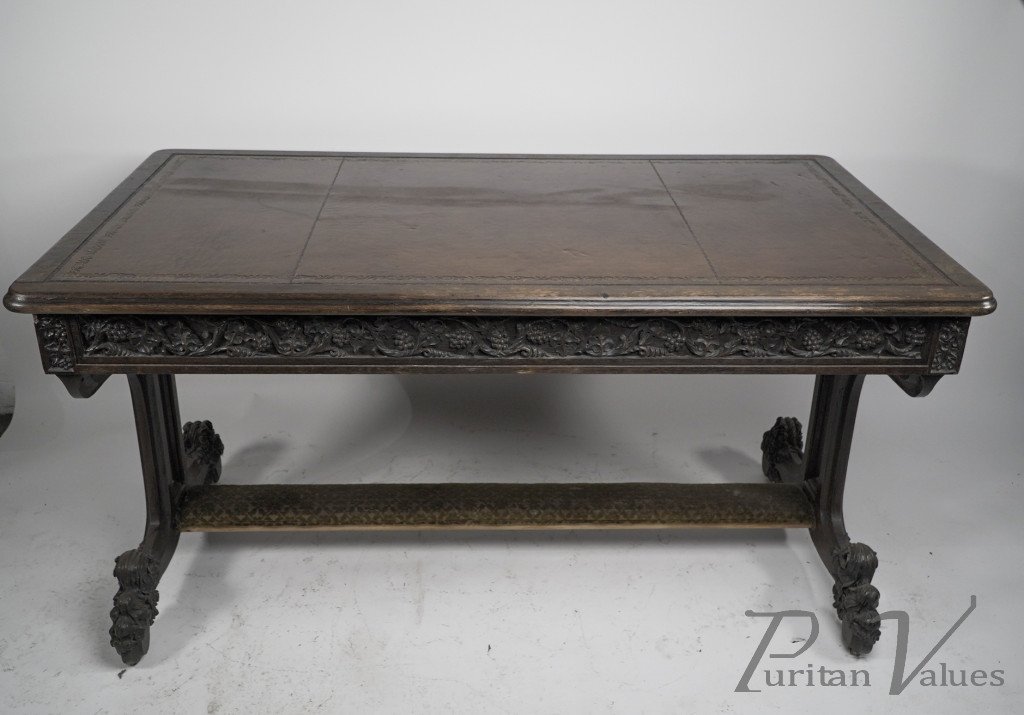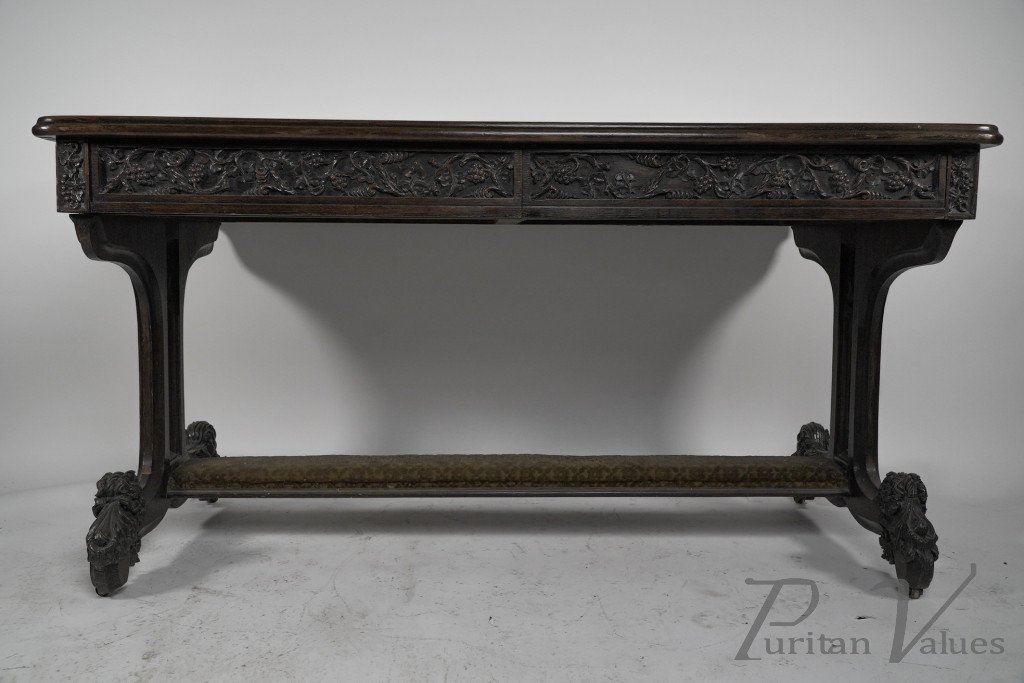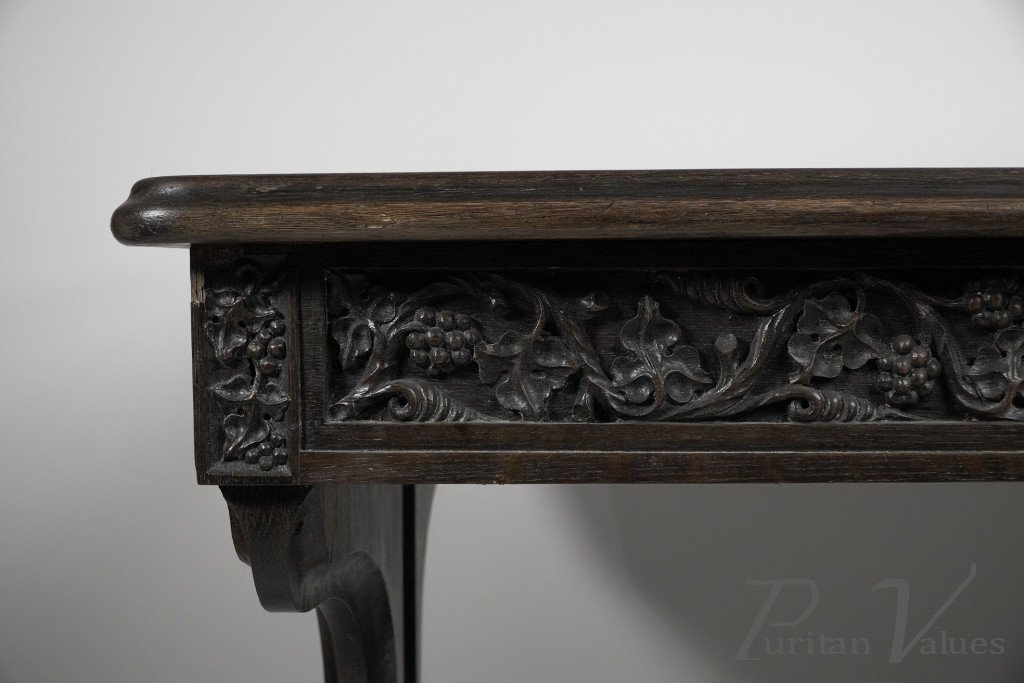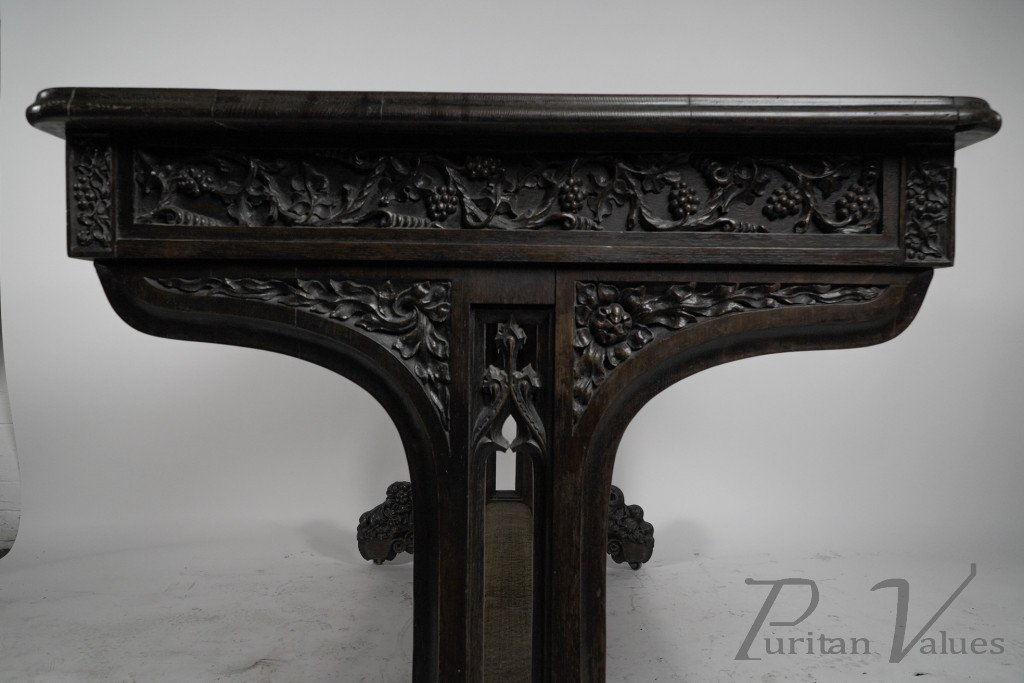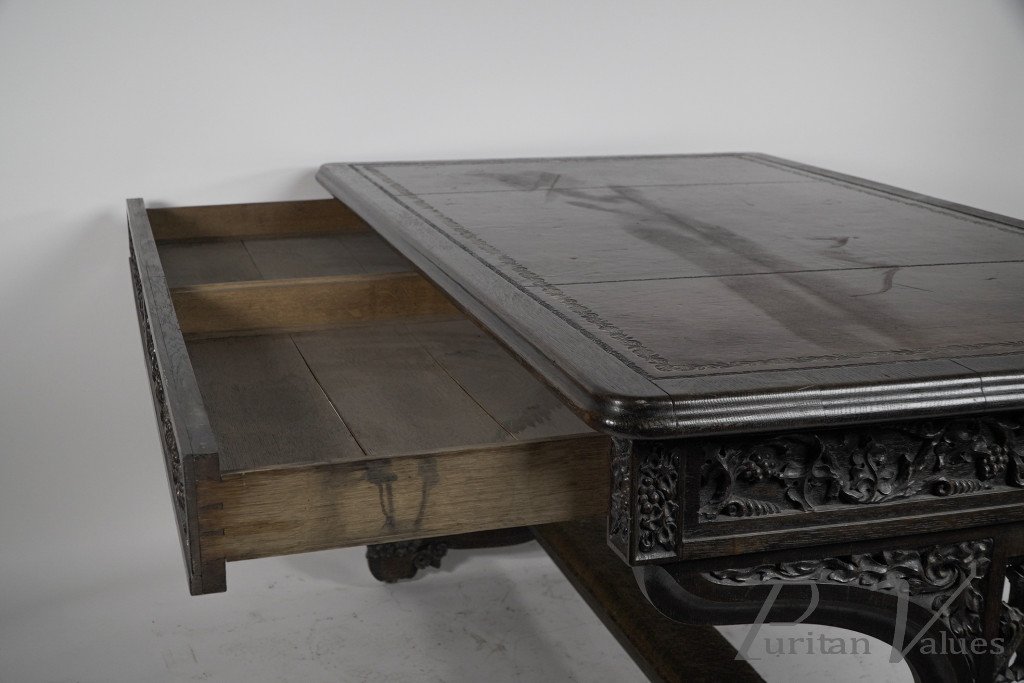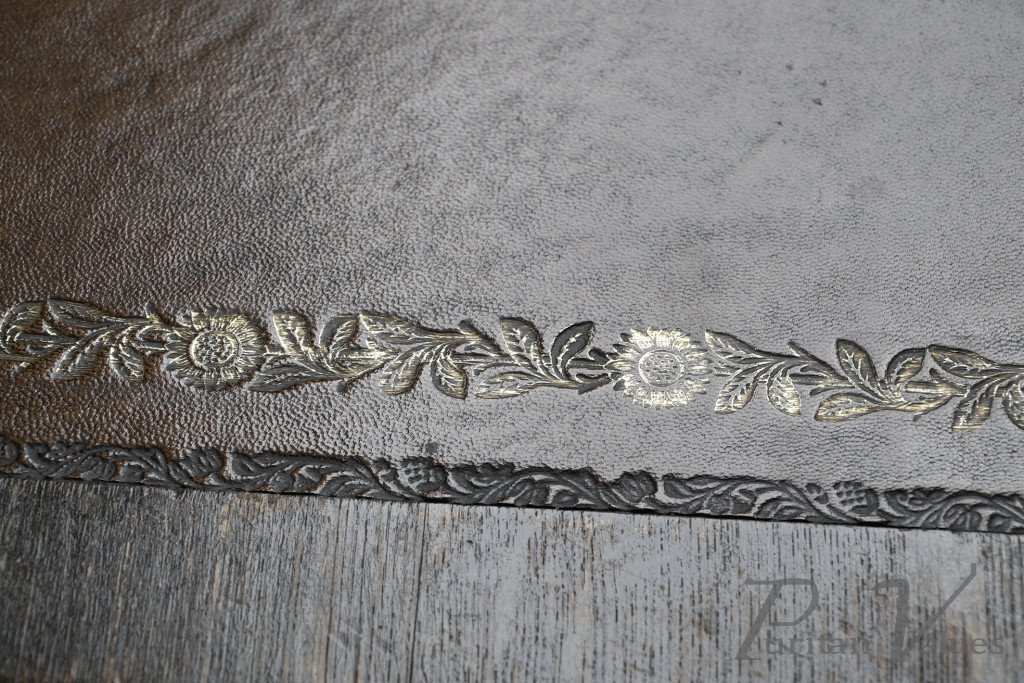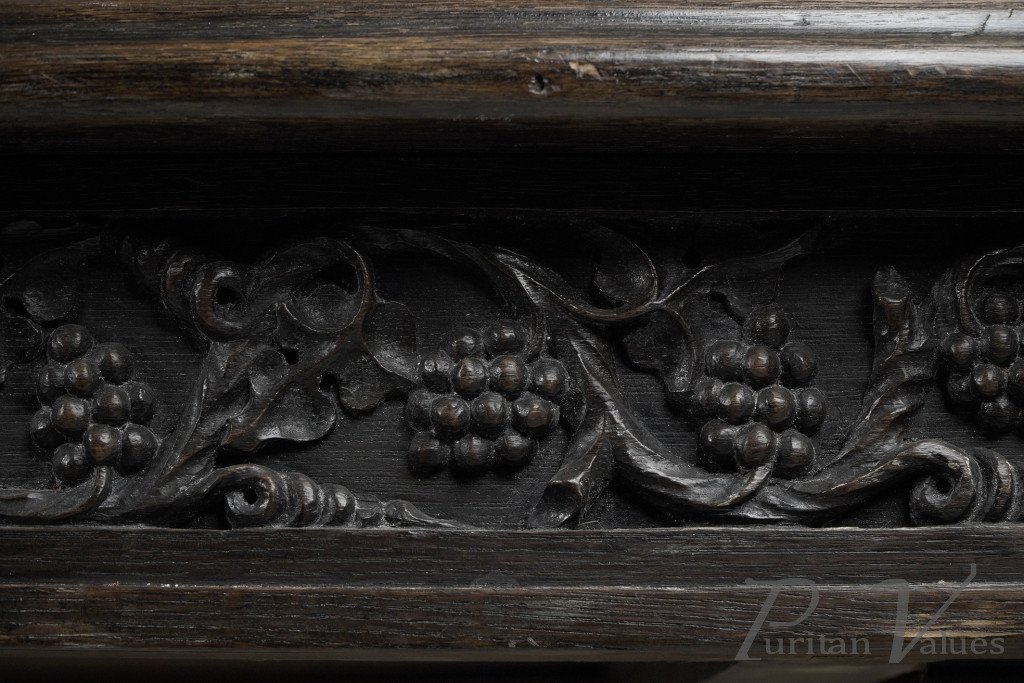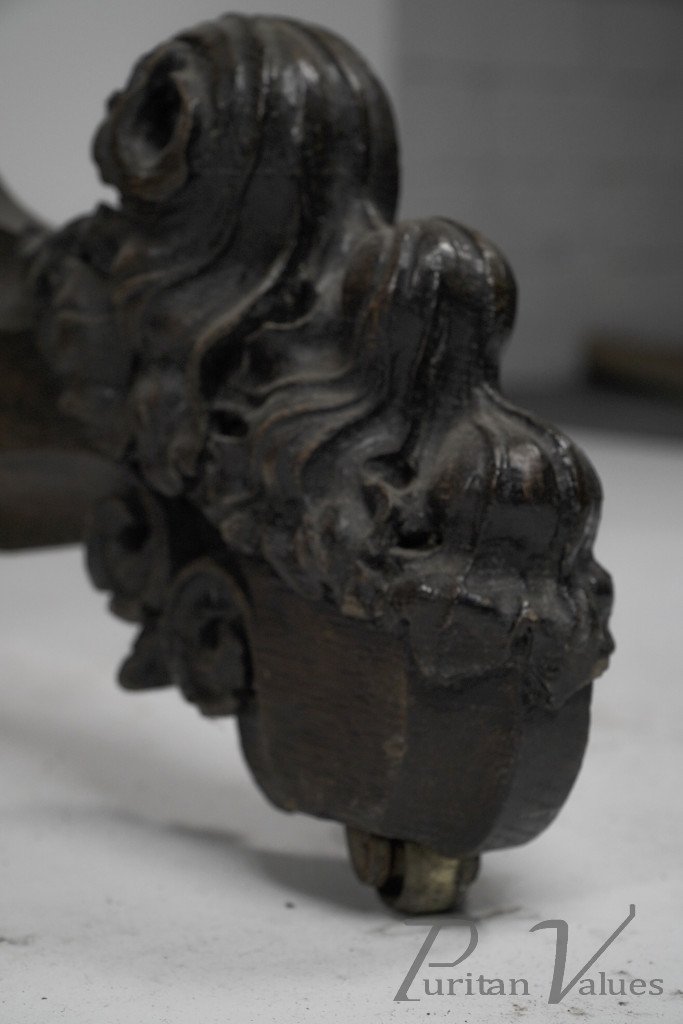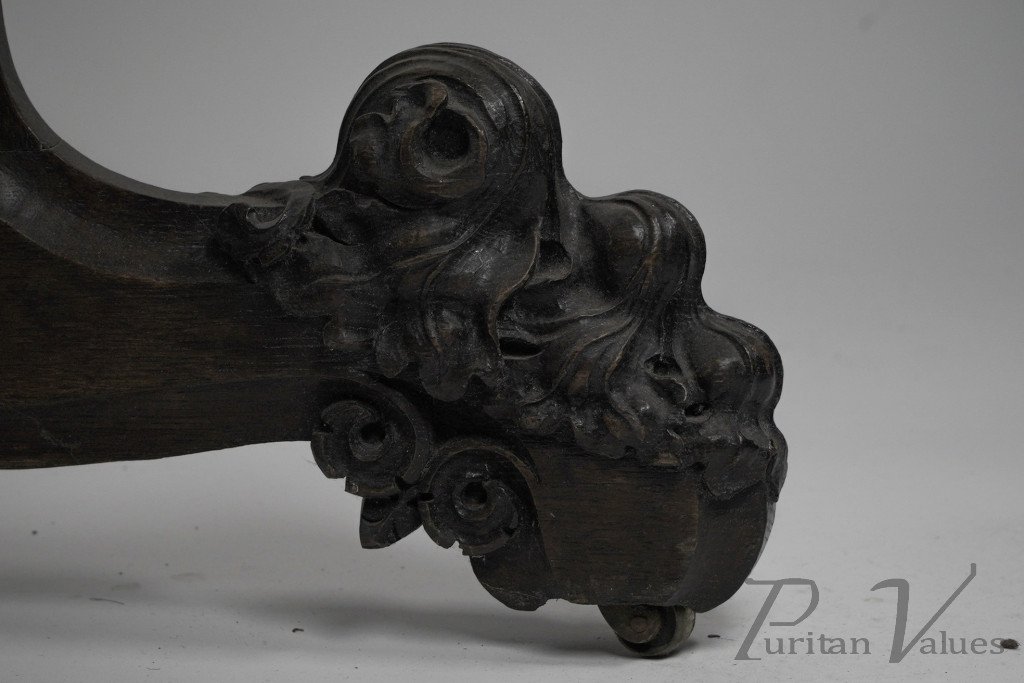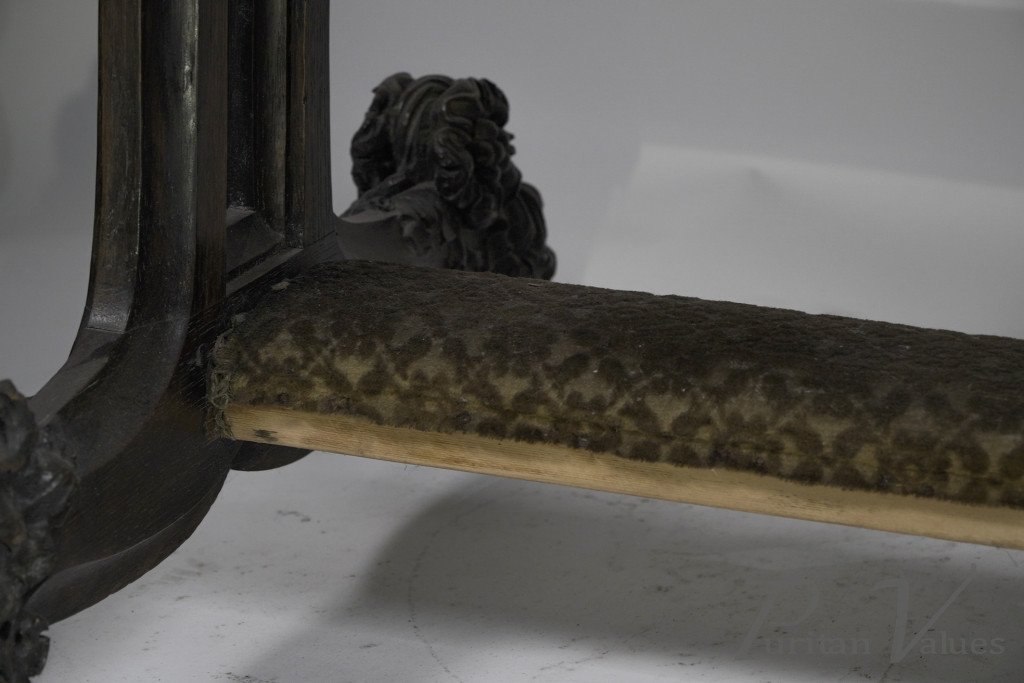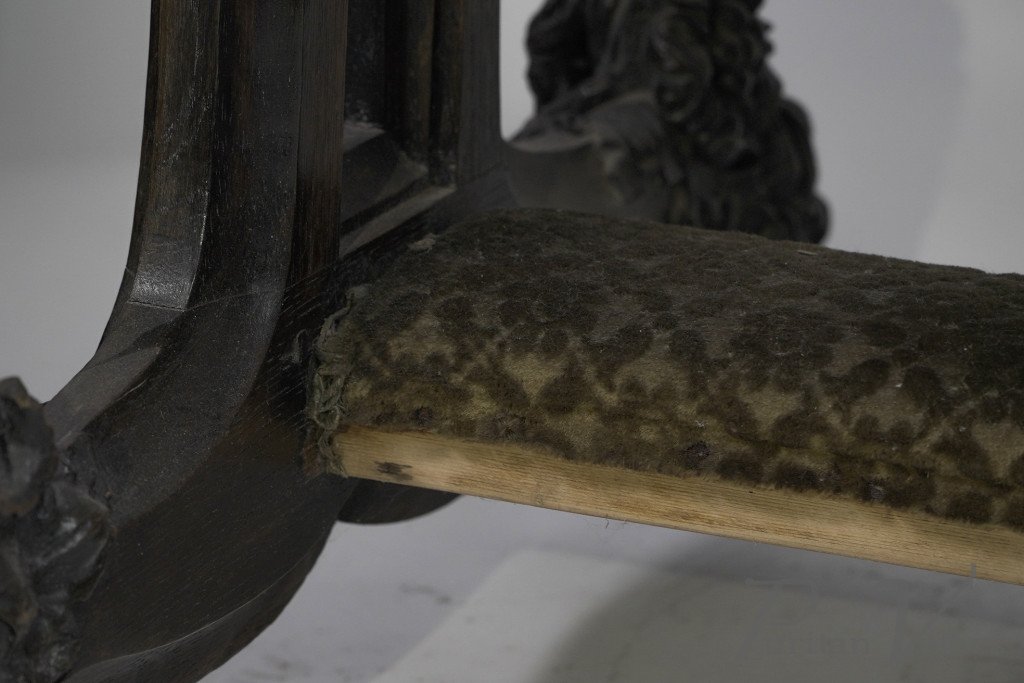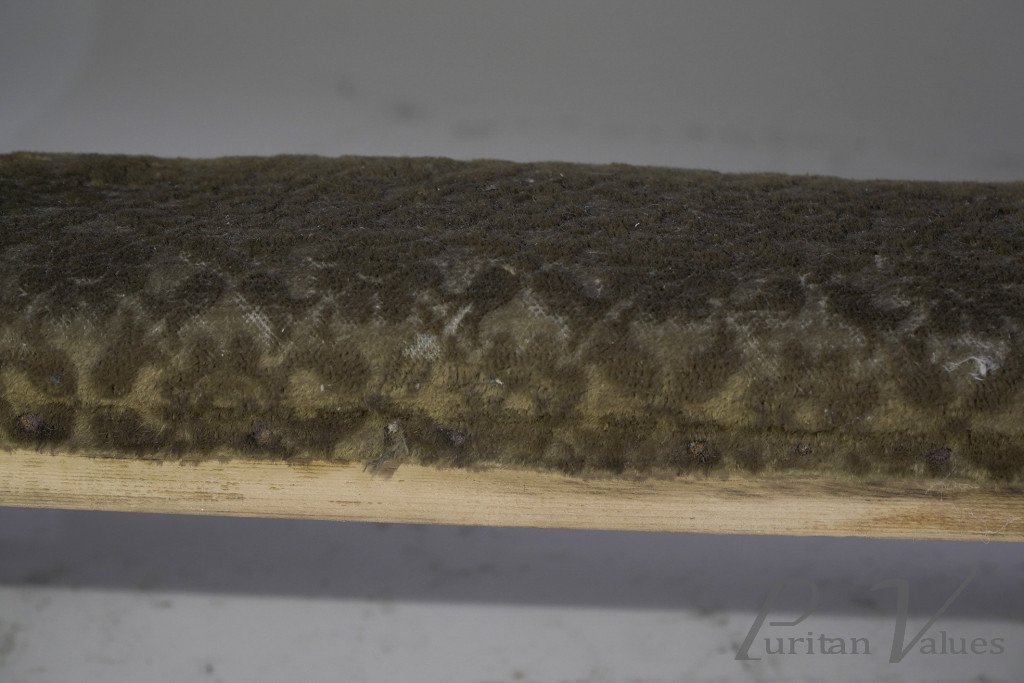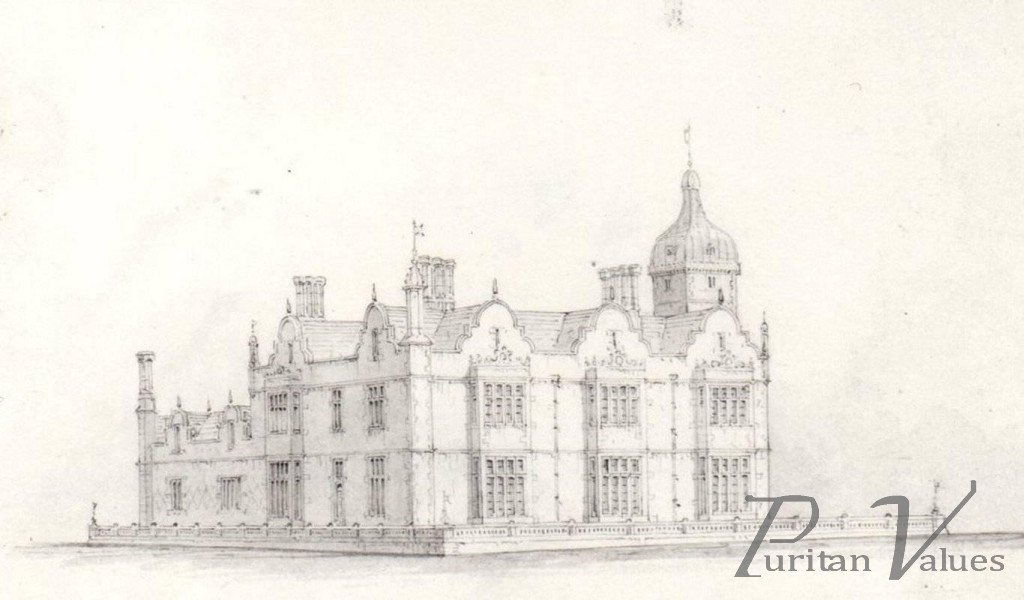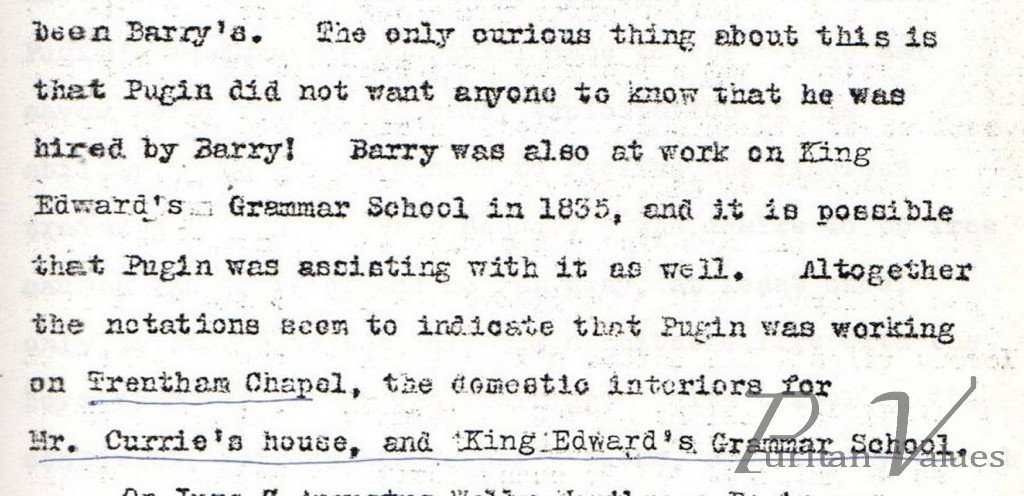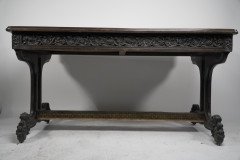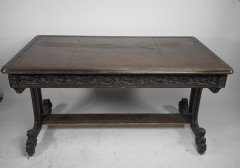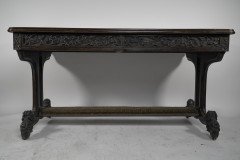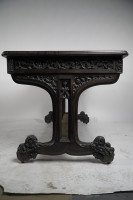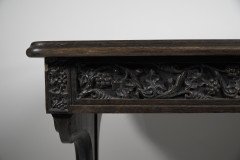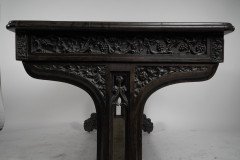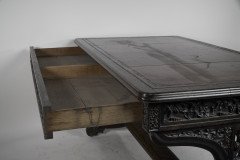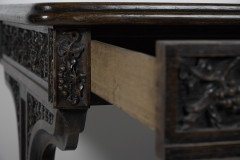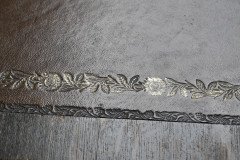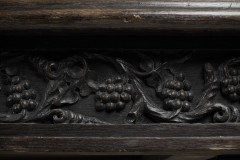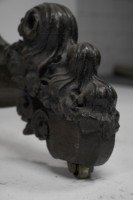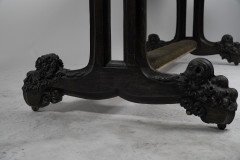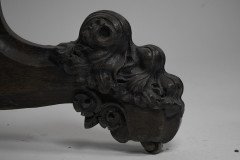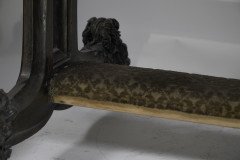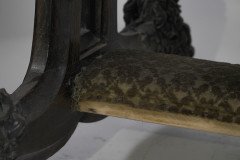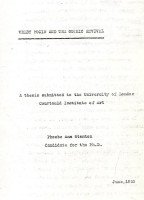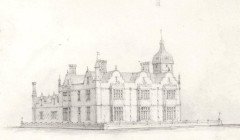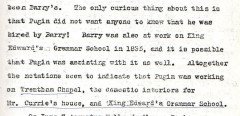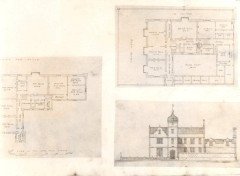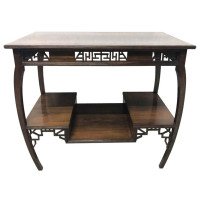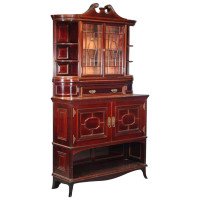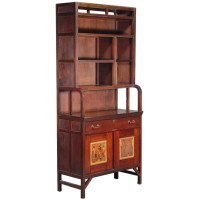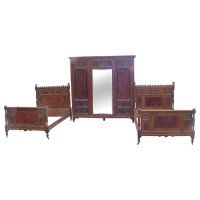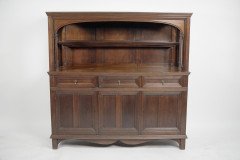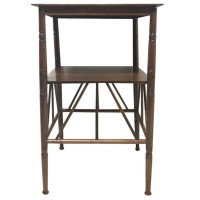A. W. N Pugin and Sir Charles Barry, an Important Gothic Revival Oak Library Table
POA
Width: 60 in (152.4 cm)
Depth: 34 in (86.36 cm)
About this piece
A. W. N Pugin and Sir Charles Barry. A rare and important Gothic Revival carved oak library table. Probably one of the earliest known pieces to derive from the illustrious relationship with Sir Charles Barry, some five years before they began work on the Houses Of Parliament together. Sir Charles Barry designed the relatively simple Tudor Gothic/ Elizabethan house East Horsley Park for William Currie in 1834. Pugin, from April 1835 worked for Barry, assisting him with some of the interiors, including furniture of his ( Barry's) King Edward V I Grammar School Birmingham. Pugin assisted Barry with Trentham Church and with the interior of Horsley Towers for Currie; this being first noted by Phoebe Stanton in her Courtauld Institute Ph. D on Pugin (1950). The Currie family sold the estate in the early 1840s to the eccentric Lord Lovelace (1805-1893) who ( Sir John and Lady Kirkland who were tenants having moved out in early 1845) lived there from
circa 1846 to his death and was responsible for the fanciful Gothic/ Byzantine work there ( Great Hall is dated 1847 and west tower is of late 1840s, east tower 1858 and cloisters 1859. The chapel is 1860 and an additional storey to the south side was also added by Lovelace. Lovelace's style in the late 1850s is clearly very different (in part due to his having travelled abroad) to his earlier work at the house. Phoebe Stanton was the first to state Pugin worked for Barry on the interiors/furniture at East Horsley Park in her 1950 Ph. D. It has therefore been generally known that Pugin worked for Barry on East Horsley Park. David Blissett included this project in his own Ph. D of 1984, in which he included the illustrations attached of Barry's scheme of the house and a tracing of what is clearly a group of designs for furniture by Barry/ Pugin. Given the design, date and scale of the furniture in these tracings it has been suggested they were for the relatively small-scale East Horsley Park and are by Barry/ Pugin
circa 1835. Before Lovelace took up residence the house was let out, but it is not clear yet whether it was let out by the Curries or Lovelace. One of the points to note in the lettings details is that it was to be let furnished. David therefore strongly suspects some of the Barry/ Pugin furniture that was specifically designed for the house
circa 1835 was left in the house not only when it was let, but when it was sold to Lovelace
circa 1840. Lovelace, in his inimitable manner, then proceeded 1847/8 to reinvent, much to Barry's horror, the relatively modest Gothic house Barry had created for Currie. Barry was so annoyed by this vandalism that he turned his back on the project. The 1st Earl of Lovelace was raised to that Peerage in Queen Victoria's Accession Honours list of 1838. Three years earlier in 1835 Lovelace married Ada Byron, becoming Countess of Love. She was the only daughter of the celebrated poet Lord Byron. She was an important figure, a mathematician and writer, who is known for her work on Charles Babbage's early mechanical computer and is often regarded as the first computer programmer. Ada described in her notes how codes could be created for the device to handle letters and symbols along with numbers. She also theorized a method for the engine to repeat a series of instructions, a process known as looping that computer programs use today. Ada also offered up other forward-thinking concepts in the article. In her later years, she tried to develop mathematical schemes for winning at gambling. Unfortunately, her schemes failed and put her in financial peril. Ada died in 1853 at the age of 37. I would like to thank David and Rachel Blissett for the information regarding Barry and Pugin working together on East Horsley Park and for the drawings and paragraphs in the images.

